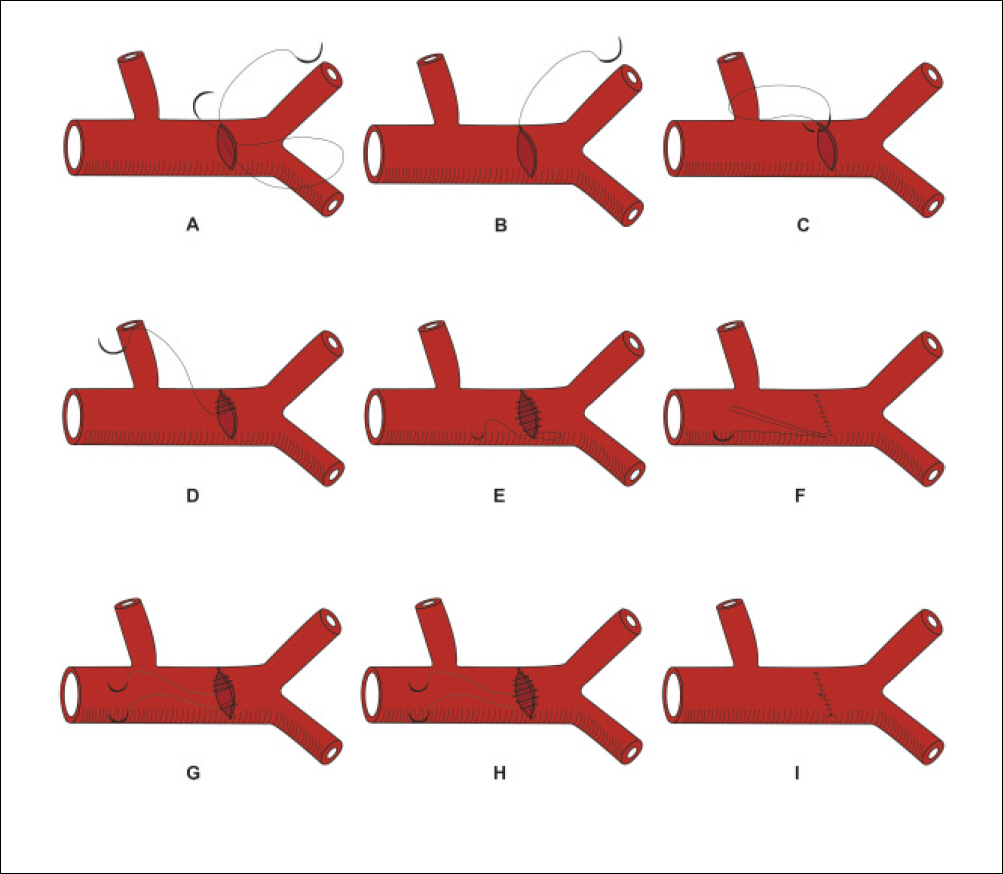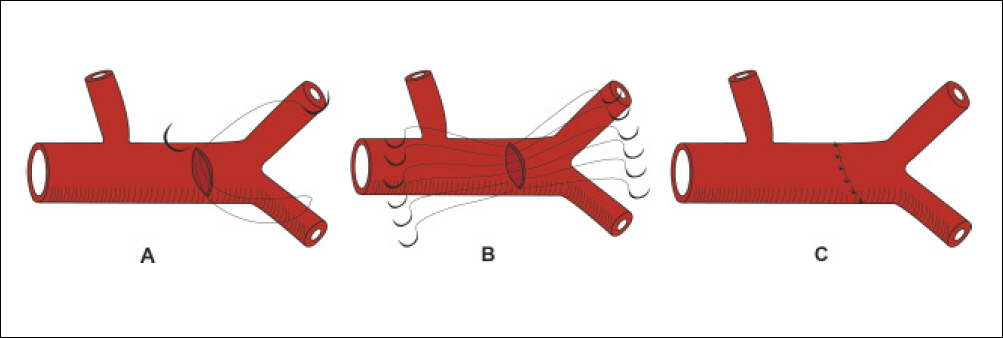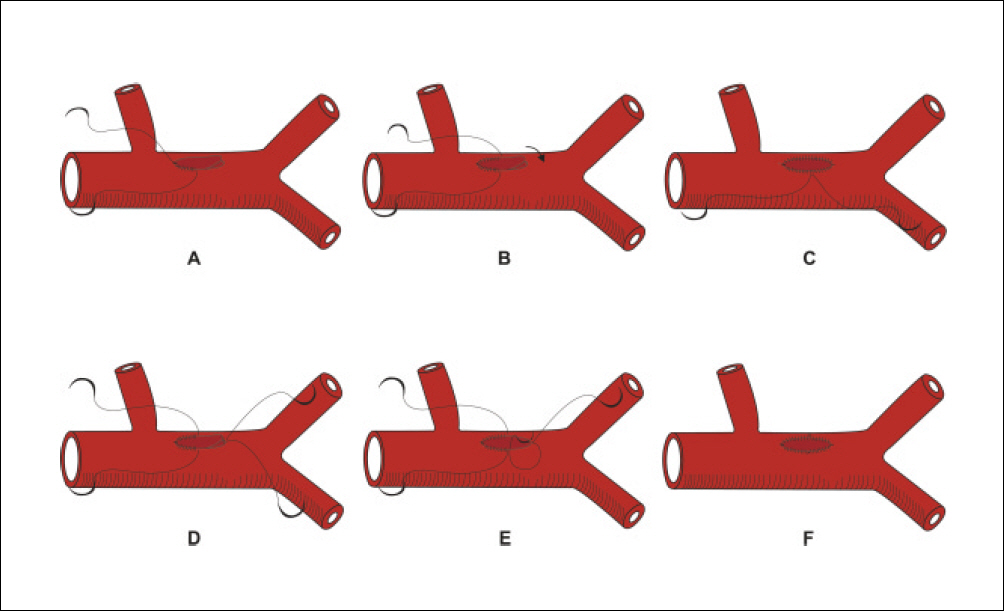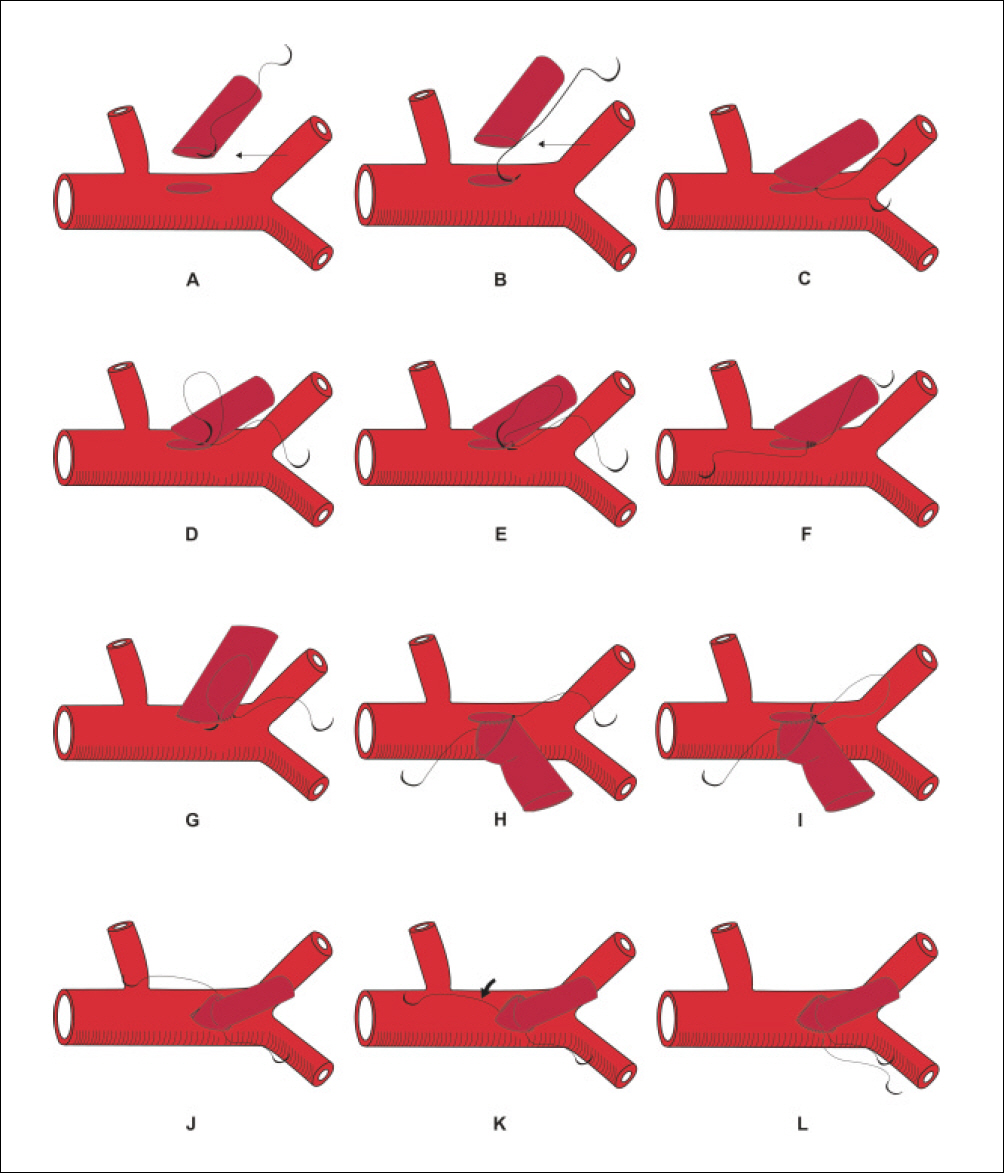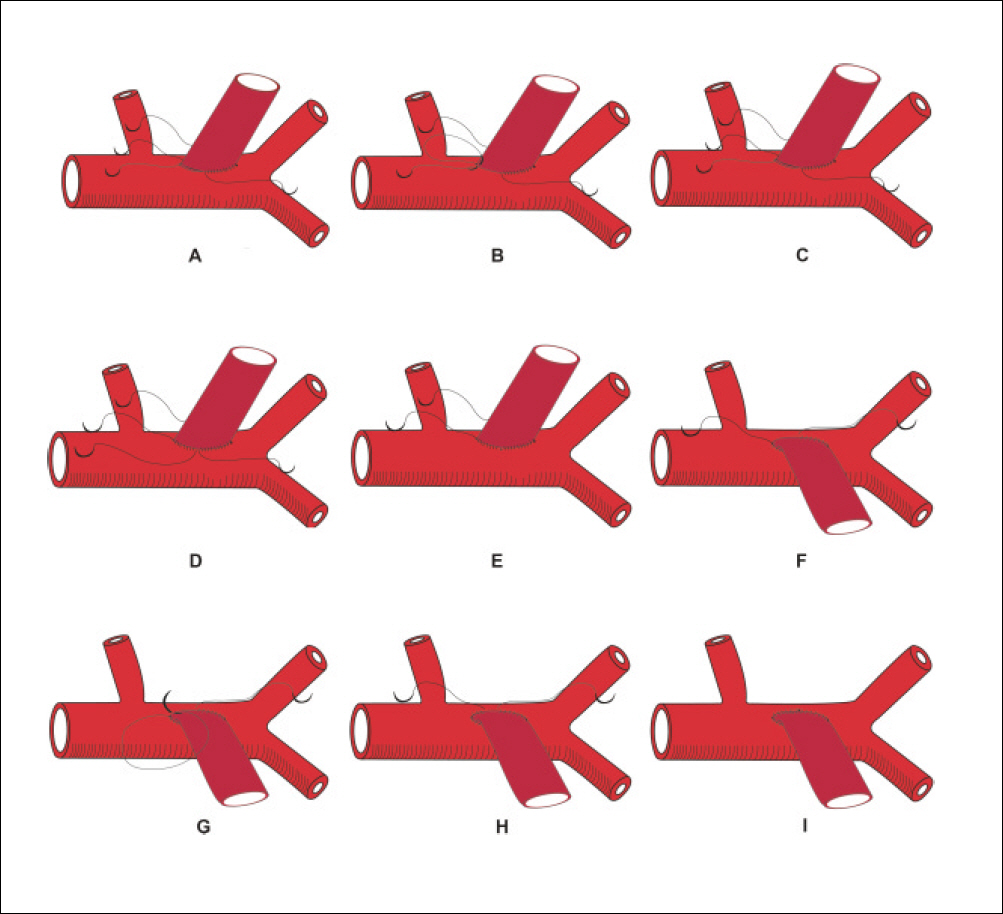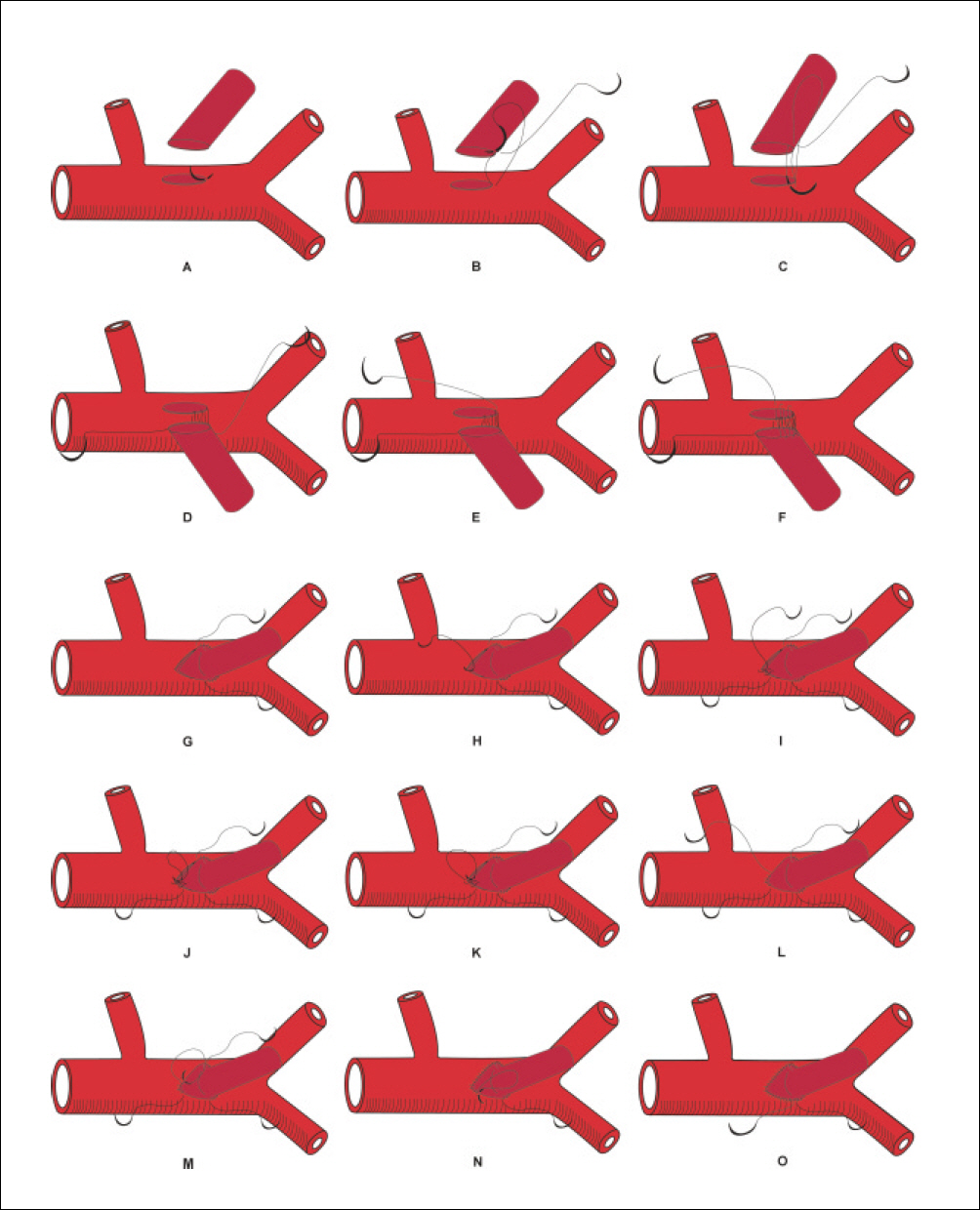J Korean Assoc Oral Maxillofac Surg.
2011 Aug;37(4):312-320. 10.5125/jkaoms.2011.37.4.312.
Classification of microvascular anastomosis in oral and maxillofacial reconstruction
- Affiliations
-
- 1Department of Oral and Maxillofacial Surgery, Dental research institute, School of Dentistry, Seoul National University, Seoul, Korea. smin5@snu.ac.kr
- KMID: 1449064
- DOI: http://doi.org/10.5125/jkaoms.2011.37.4.312
Abstract
- A reconstruction following a resection of malignant oral cavity tumors is one of the most difficult problems in recent oral oncology. For a better understanding of oral and maxillofacial reconstructive procedures, basic and advanced microvascular anastomosis techniques must be learned and memorized. The aim of this article was to clarify and define the microvascular anastomosis methods, such as primary closure after an arteriotomy, end to side anastomosis, end to end anastomosis, and side to side anastomosis with an artery and vein. This review article discusses the basic skills regarding microvascular anastomoses with brief schematic diagrams in the Korean language. This article is expected to be helpful, particularly to young doctors in the course of the Korean national board curriculum periods for oral and maxillofacial surgery.
Keyword
MeSH Terms
Figure
Reference
-
1. Yasagil MG. Reconstructive and constructive surgery of the cerebrovascular arteries in man. Yasagil MG, editor. Microsurgery Applied to Neurosurgery. Stuttgart: Georg Thieme;1969. p. 82–119.2. Chang CH, Choi BY. Characteristics of training materials for successful microvascular anastomosis and preclinical assessment of the surgical skills. Korean J Cerebrovasc Surg. 2007; 9:243–6.3. Lee KS, Suh JD, Han SB, Lee SJ, Choi IC, Kim IS, et al. The effect of aspirin and prostaglandin E1 on the patency of microvascular anastomosis in rat. Korean J Microsurg. 2000; 9:179–85.4. Joo YH, Sun DI, Park JO, Cho KJ, Seo JH, Park JW, et al. Analysis of recipient vessel for microvascular reconstruction of the head and neck. Korean J Otorhinolaryngol-Head Neck Surg. 2010; 53:20–3.
Article5. Kim SM, Seo MH, Kang JY, Eo MY, Myoung H, Lee SK, et al. Anatomical review of radial forearm free flap for the oral cavity reconstruction. J Korean Assoc Maxillofac Plast Reconstr Surg. 2011; 33:95–101.6. Hoballah JJ. Vascular reconstructions; anatomy, exposures, and techniques. New York: Springer;2000. p. 17–26.7. Hoballah JJ, Eid GM, Nazzal MM, Sharp WJ, Corson JD. Contralateral internal jugular vein interposition for salvage of a functioning arteriovenous fistula. Ann Vasc Surg. 2000; 14:679–82.
Article8. Rutherford RB. Atlas of vascular surgery: basic techniques and exposures. Philadelphia: Saunders;1993. p. 48–9.9. Pinheiro AL, Castro JF, Thiers FA, Cavalcanti ET, Re -go TI Quevedo AS. Using Novafil: would in make suturing easier? Braz Dent J. 1997; 8:21–5.10. Kirklin JW, Barratt-Boyes BG. Ischemic heart disease. Kirklin JW, Barratt-Boyes BG, editors. Cardiac surgery. 2nd ed.New York: Churchill-Livingstone;1993. p. 309.11. Carrel A. The operative technique of vascular anastomoses and the transplantation of viscera. Med Lyon. 1902; 98:859.12. Nakayama K, Yamamoto K, Tamiya T, Makino H, Odaka M, Ohwada M, et al. Experience with free autografts of the bowel with a new venous anastomosis apparatus. Surgery. 1964; 55:796–802.13. Sotturai VS, Batson RC. Use of nonreversed, translocated saphenous vein graft. Bergean JJ, Yao JST, editors. Techniques in arterial surgery. Philadelphia: Saunders;1990. p. 184–91.14. Taylor LM, Porter JM. Technique of reversed vein bypass to distal leg arteries. Bergean JJ, Yao JST, editors. Techniques in arterial surgery. Philadelphia: Saunders;1990. p. 109–121.15. Bergan JJ, Veith FJ, Bernhard VM, Yao JS, Flinn WR, Gupta SK, et al. Randomization of autogenous vein and polytetrafluoroethylene grafts in femoral-distal reconstructions. Surgery. 1982; 92:921–30.16. Bush HL Jr, Nabseth DC, Curl GR, O’ Hara ET, Johnson WC, Vollman RW. In situ saphenous vein bypass grafts for limb salvage. A current fad or a viable alternative to reversed vein bypass grafts? Am J Surg. 1985; 149:477–80.17. De Bakey ME, Crawford ES, Morris GC Jr, Cooley DA. Patch graft angioplasty in vascular surgery. J Cardiovasc Surg. 1962; 3:106–41.18. Fillinger MF, Kerns DB, Bruch D, Reinitz ER, Schwartz RA. Does the end-to-end venous anastomosis offer a functional advantage over the end-to-side venous anastomosis in high-output arteriovenous grafts? J Vasc Surg. 1990; 12:676–88.
Article19. Yamamoto Y, Nohira K, Kuwahara H, Sekido M, Furukawa H, Sugihara T. Superiority of end-to-side anastomosis with the internal jugular vein: the experience of 80 cases in head and neck microsurgical reconstruction. Br J Plast Surg. 1999; 52:88–91.
Article20. Ueda K, Harii K, Nakatsuka T, Asato H, Yamada A. Comparison of end-to-end and end-to-side venous anastomosis in free-tissue transfer following resection of head and neck tumors. Microsurgery. 1996; 17:146–9.
Article21. Khouri RK. Avoiding free flap failure. Clin Plast Surg. 1992; 19:773–81.
Article22. Khouri RK, Cooley BC, Kunselman AR, Landis JR, Yeramian P, Ingram D, et al. A prospective study of microvascular free-flap surgery and outcome. Plast Reconstr Surg. 1998; 102:711–21.
Article23. Kanoh N, Dai CF, Ikeda N, Mimura O. Parameters for the preoperative evaluation of arteriosclerosis for free-flap transfers in head and neck surgery. Clin Otolaryngol Allied Sci. 2000; 25:135–8.
Article24. Biemer E, Stock W, Wolfensberger C, Ingianni G, Götz WD. Successful replantation of a totally avulsed scalp. Br J Plast Surg. 1979; 32:19–21.
Article25. Höltje WJ. Successful replantation of an amputated upper lip. Plast Reconstr Surg. 1984; 73:664–70.
Article26. Mutimer KL, Banis JC, Upton J. Microsurgical reattachment of totally amputated ears. Plast Reconstr Surg. 1987; 79:535–41.
Article27. Kim JS, Choi TH, Kim NG, Lee KS, Han KH, Son DG, et al. The replantation of an amputated tongue by supermicrosurgery. J Plast Reconstr Aesthet Surg. 2007; 60:1152–55.
Article28. Sinna R, Boloorchi A, Mahajan AL, Qassemyar Q, Robbe M. What should define a “perforator flap?”Plast Reconstr Surg. 2010; 126:2258–63.
- Full Text Links
- Actions
-
Cited
- CITED
-
- Close
- Share
- Similar articles
-
- Inductive or deductive? Research by maxillofacial surgeons
- Author’s reply to the letter to the editor of Journal of the Korean Association of Oral and Maxillofacial Surgeons
- Factors affecting anastomosis failure in microvascular fibula flap reconstruction of the maxillofacial region: a systematic review and meta-analysis
- Anatomical Review of Radial Forearm Free Flap for the Oral Cavity Reconstruction
- Importance of various oral manifestations regardless of CD4 cell count in HIV/AIDS patients

